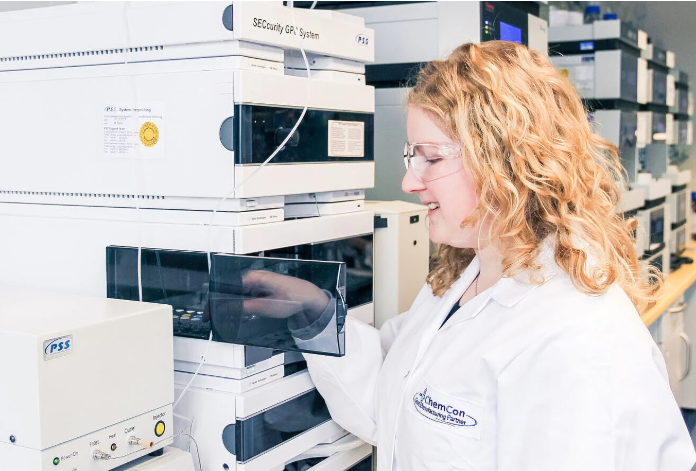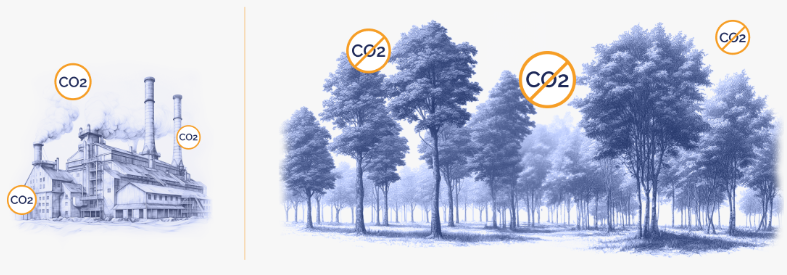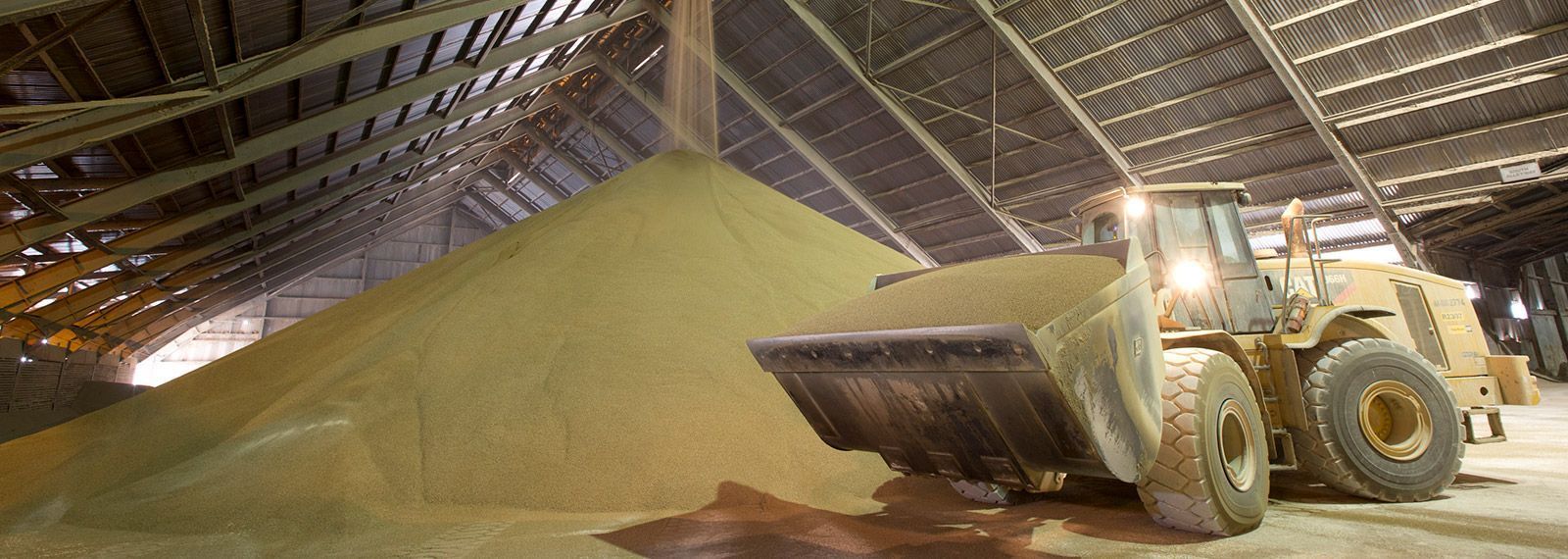Inside the Life of a Chemical: From Raw Material to High-Purity Export
The Journey of a Chemical
Chemicals are the invisible backbone of modern life. From the medicine in your cabinet to the smartphone in your pocket, countless products rely on carefully engineered substances to function safely and effectively. Yet, behind every drop, grain or crystal, lies a fascinating journey - one that begins with raw materials drawn from the earth and ends with high-purity products, shipped to industries across the globe.
This transformation is far from simple. It requires precision engineering, advanced purification processes, and rigorous quality control to meet the demanding standards of sectors such as pharmaceuticals, electronics, food processing, and manufacturing. For a drug to be safe, a semiconductor to function flawlessly, or a packaged food to last longer, the chemicals used must meet exacting specifications.
Understanding this lifecycle - from raw extraction to the moment a shipment is sealed for export - offers a glimpse into the hidden infrastructure that keeps global industries running. In this article, we’ll follow a chemical’s path step-by-step, exploring the science, technology and quality standards that turn basic materials into high-value exports trusted around the world.
Stage 1 – Sourcing the Raw Materials
Every chemical’s journey begins with its building blocks: the raw materials. In the chemical industry, these can come from a wide variety of sources. Minerals such as phosphates, nitrates and silica are extracted from mines and quarries. Petroleum derivatives, such as ethylene, propylene and benzene, are obtained through refining processes, forming the basis of numerous synthetic chemicals. Plant-based sources, including essential oils, starches and natural resins, provide renewable alternatives and are increasingly in demand as industries seek more sustainable inputs.
Types of Raw Materials in the Chemical Industry
- Minerals – essential for fertilizers, catalysts and industrial compounds.
- Petroleum derivatives – key for polymers, solvents and surfactants.
- Plant-based sources – used in food additives, fragrances and bio-based plastics.
Global vs Local Sourcing – Pros, Cons, and Trends
Raw materials can be sourced locally or imported from international suppliers. Global sourcing often offers lower costs, access to rare resources, and larger volumes, but it can involve longer lead times, geopolitical risks, and supply chain disruptions. Local sourcing reduces transportation emissions, supports regional economies, and can provide a more reliable supply, though it may limit variety and volume. Current trends indicate a growing shift toward hybrid sourcing models, which strike a balance between cost efficiency and supply security.
Environmental and Ethical Considerations
Sustainable sourcing is no longer optional. Responsible companies evaluate suppliers for environmental stewardship, fair labor practices, and compliance with international safety regulations. This includes minimizing habitat destruction, ensuring ethical mining, and reducing carbon footprints in transportation.
Quality Control at the Sourcing Stage
Before raw materials enter production, they undergo strict quality control checks, testing for purity, composition, and contamination. Consistent, high-quality inputs are the foundation for achieving the desired end-product specifications, making sourcing a critical first step in a chemical’s lifecycle.
Stage 2 – Chemical Processing & Purification
Once raw materials are sourced, the next step is transforming them into usable, high-quality chemicals through processing and purification. This stage is where the real chemistry begins - turning crude inputs into refined products ready for demanding applications.
Pre-treatment and Initial Processing
Before full-scale processing, raw materials undergo pre-treatment to remove obvious impurities and prepare them for transformation. This can include mechanical steps like grinding, sieving or washing, as well as chemical treatments such as neutralization or oxidation. In many cases, the goal is to separate unwanted components from the desired substance or to convert the material into a more workable form. For example, mineral ores may be roasted to alter their chemical structure, while petroleum fractions may be subjected to cracking to produce more valuable derivatives.
Purification Techniques
Achieving high-purity output often requires multiple purification methods, each tailored to the chemical’s properties:
- Distillation – separates components based on boiling points, widely used in petrochemicals and solvents.
- Crystallization – purifies solids by forming crystals from a saturated solution, leaving impurities behind.
- Chromatography – separates complex mixtures, crucial for high-value specialty chemicals.
- Membrane Filtration – uses semi-permeable barriers to remove particles or separate molecules based on size.
Often, these methods are combined in multi-step sequences to ensure purity levels meet strict industry standards.
Role of Technology
Modern plants rely heavily on automation and advanced control systems to maintain precision. AI-driven monitoring can predict process deviations before they occur, improving consistency and reducing waste. IoT sensors provide real-time data on temperature, pressure and chemical composition, enabling quick adjustments and maintaining compliance with quality benchmarks.
Regulatory Compliance
Throughout processing, manufacturers must adhere to stringent regulatory frameworks. In the EU, REACH governs chemical safety and handling. In the USA, the EPA oversees environmental compliance, while the FDA regulates chemicals used in food, pharma, and personal care products. Meeting these standards is not only a legal requirement but also a critical step in ensuring that final products are safe, consistent and trusted worldwide.
By the end of this stage, the chemical has evolved from a crude raw material into a purified, value-added substance, ready for formulation or final finishing before export.
Stage 3 – Quality Testing & Certification
Even the most advanced processing is only valuable if the final product meets the strict specifications required by its end users. This is where quality testing and certification come into play, ensuring that every batch leaving the facility is safe, consistent and compliant with international standards.
Analytical Testing Methods
Quality control labs employ a range of analytical techniques to verify purity, composition and performance:
- Spectroscopy – including infrared (IR), UV-Vis, and atomic absorption, to identify molecular structures and detect trace impurities.
- Titration – a classic method for determining concentration, often used for acids, bases, and salts.
- Mass spectrometry – for precise molecular weight analysis and impurity profiling.
Often, multiple methods are used in combination to provide a complete chemical fingerprint of the product.

Meeting International Standards
To ensure compatibility with global markets, chemicals must meet recognized benchmarks such as:
- ISO (International Organization for Standardization) for quality management systems.
- ASTM (American Society for Testing and Materials) for material specifications and testing protocols.
- GMP (Good Manufacturing Practices) for chemicals intended for pharmaceutical or food applications.
Adhering to these standards boosts buyer confidence and facilitates smoother market entry.
Documentation and Certification for Exports
Every shipment is accompanied by Certificates of Analysis (CoA), safety data sheets and other compliance documents. These not only prove that the product meets contractual specifications but also help navigate customs and regulatory checks in destination countries.
Common Challenges in Quality Assurance
Despite rigorous procedures, challenges can arise - such as variability in raw materials, instrument calibration issues, or evolving regulatory requirements. Continuous training, investment in lab technology, and proactive supplier management are essential to maintaining reliability and trust.
Stage 4 – Packaging, Storage & Logistics
Once a chemical has passed all quality checks, the focus shifts to safely delivering it to customers - often across continents. This stage is just as critical as processing because improper handling can compromise quality, safety and regulatory compliance.
Specialized Packaging for Chemicals
Different chemicals require different packaging solutions to ensure stability and safety during transit. Corrosion-resistant containers, such as lined steel drums or high-density polyethylene (HDPE) barrels, prevent chemical interaction with the packaging. For highly reactive or oxygen-sensitive products, inert gas sealing (often with nitrogen) is used to maintain purity. Certain temperature-sensitive chemicals are shipped in insulated or refrigerated containers to prevent degradation.
Storage Requirements
Before shipment, chemicals are held in specialized warehouses designed for safety and compliance. This can include temperature/humidity controlled environments, spill containment systems, and marked segregation areas for incompatible substances. Strict safety protocols - such as ventilation systems, fire suppression, and restricted access - help protect both the product and personnel.
International Shipping Regulations
Transporting chemicals across borders means adhering to a web of international rules. The IMDG Code (International Maritime Dangerous Goods) governs ocean freight, while IATA Dangerous Goods Regulations apply to air transport. Classification under hazardous goods categories determines packaging, labeling, and documentation requirements. These standards are vital not only for legal compliance but also for preventing accidents during transit.
By the time a shipment leaves the facility, it has been carefully packaged, stored under optimal conditions, and documented to meet international standards - ready to arrive at its destination in perfect condition.
Stage 5 – The Export Journey
With the product packaged, stored and ready, the final stage of a chemical’s lifecycle is getting it into the hands of customers worldwide. This involves a highly coordinated export process that balances speed, safety and regulatory compliance.
Export Documentation is the backbone of this stage. A Bill of Lading confirms the shipment’s details and terms with the carrier. A Safety Data Sheet (SDS) provides essential handling, hazard and emergency information for the chemical in transit. Certificates of Analysis (CoA) verify that the product meets agreed specifications. Additional permits or declarations may be required depending on the destination country and chemical classification.
Customs Clearance and Trade Compliance are critical checkpoints. Exporters must comply with both domestic export laws and the import regulations of the receiving country. This includes adherence to international chemical control frameworks, accurate tariff classification and, for certain products, compliance with chemical safety conventions. Any documentation errors can cause costly delays or rejections at borders.
For global clients, Supply Chain Transparency is increasingly important. Providing real-time shipment tracking, digital document sharing, and proactive communication about delivery timelines builds trust and ensures smooth collaboration. Modern exporters often integrate blockchain or cloud-based systems to maintain a clear, tamper-proof record of the shipment’s journey.
By the time the chemical arrives at its final destination, it has traveled through a tightly regulated, meticulously documented process - ensuring that quality, safety and compliance are preserved from the plant floor to the customer’s door.
Challenges & Future Trends in Chemical Manufacturing
Chemical manufacturing operates in a complex global environment where both external and internal factors can impact operations. Supply chain disruptions - whether from pandemics, geopolitical tensions, or raw material shortages - have shown how vulnerable the industry can be to sudden shocks. These challenges drive companies to diversify suppliers, build local resilience, and maintain strategic stockpiles.
Sustainability is another defining priority. Green chemistry and renewable feedstocks are gaining momentum, with manufacturers seeking ways to reduce waste, lower carbon emissions, and replace hazardous substances with safer alternatives. This shift is not only about environmental responsibility but also about meeting evolving customer expectations and regulatory demands.
On the technology front, digital transformation is reshaping production and
logistics. Digital twins allow manufacturers to simulate processes for optimization and troubleshooting without disrupting operations. Blockchain tracking enhances supply chain transparency, ensuring authenticity and traceability from raw materials to final delivery. AI-driven quality control enables real-time defect detection and predictive maintenance, helping to reduce downtime and maintain consistent product quality.
By embracing sustainable practices and advanced technologies, the chemical industry can navigate uncertainties while continuing to deliver the
high-purity products that modern life depends on.
Conclusion
From the moment raw materials are sourced to the final delivery of a high-purity product, every stage of a chemical’s journey demands precision, expertise and responsibility. Careful sourcing, advanced processing, rigorous quality testing, secure packaging, and compliant export procedures ensure that each shipment meets the highest standards of safety and performance.
In an industry where even the smallest deviation can have significant consequences, strict quality control is non-negotiable. Equally important is the growing commitment to sustainability, with manufacturers adopting greener processes and renewable feedstocks to reduce their environmental footprint.
Looking ahead, the global chemical trade will be shaped by innovation, transparency and resilience. Companies that invest in advanced technologies and sustainable practices will be best positioned to thrive - delivering the essential chemicals that power modern industries and connect markets worldwide.
FAQs
What is the difference between industrial-grade and high-purity chemicals?
Industrial-grade chemicals are suitable for general manufacturing applications and may contain trace impurities that do not affect their intended use. High-purity chemicals, on the other hand, undergo more rigorous purification and testing to meet the strict specifications required for sensitive applications such as pharmaceuticals, electronics and food processing.
How long does it take for a chemical to go from raw material to export-ready?
The timeline varies depending on the chemical’s complexity, processing requirements and regulatory approvals. For straightforward products, it may take just a few days. Highly specialized or regulated chemicals can take weeks or even months, especially if they require extensive purification or certification.
What safety measures are taken during chemical shipping?
Safety starts with specialized packaging designed to prevent leaks, corrosion, or contamination. Chemicals are stored in compliant facilities, clearly labeled, and shipped according to international regulations such as the IMDG Code for sea freight or IATA rules for air transport.
How is chemical purity measured?
Purity is measured using analytical methods such as spectroscopy, titration or chromatography. These techniques detect and quantify impurities, ensuring that the product meets the agreed specification before shipment.
Which countries lead in high-purity chemical exports?
Major exporters include Germany, the United States, China and Japan, all of which have advanced manufacturing capabilities, strong regulatory frameworks, and well-developed global distribution networks.
















